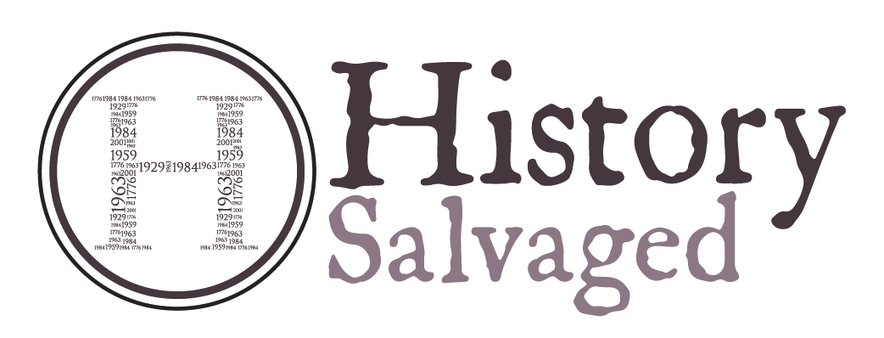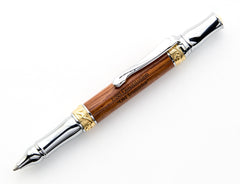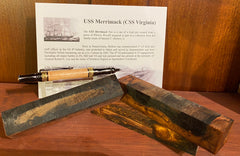Ships of america
History Salvaged is continually searching for new and exciting Witness Wood® and other materials of historic significance. Hereinbelow is a brief description of some very scarce Witness Wood® acquired by History Salvaged from vessels, some famous and some obscure, that have had an impact on the history of the United States.
Because of the rarity of these Witness Woods®, if there is a specific ship you are interested please email Bob@HistorySalvaged.com and we will be happy to work with you to create your perfect custom pen, knife, cufflinks, etc.
History Salvaged has added a quantity of assorted Witness Wood®, rope and hardware removed during 1850 repairs, the original 1927 and 1972 reconstruction of the most famous US Ship in US History, the Frigate USS Constitution, nicknamed "Old Ironsides" when British Royal Navy cannonballs bounced off the hull of the Constitution during the battle and capture of HMS Guerriere, a turning point in the War of 1812.
USS CONSTELLATION
History Salvaged has secured Witness Wood® acquired from and certified by the U.S. Naval Historical Display Center, removed when the “original” USS Constellation, after being laid up in Norfolk, VA from 1845-1853, was “broken up” before the building and launch of the second USS Constellation in 1854.
USS Constellation was a 38-gun frigate, one of the “Six Original Frigates” authorized for construction by the Naval Act of 1794. She was distinguished as the first U.S. Navy vessel to put to sea and the first U.S. Navy vessel to engage and defeat an enemy vessel. Constructed in 1797, she was decommissioned in 1853. Constellation was built in Baltimore and launched on 7 September 1797.
On February 9, 1799, she fought and captured the French frigate Insurgente. This was the first major victory by an American-designed and built warship. In February 1800, Constellation fought the French frigate Vengeance.
Although Vengeance was not captured or sunk, she was so badly damaged that her captain intentionally grounded the ship to prevent her from sinking. Constellation was struck in 1853 and broken up. Some timbers were re-used in the building of a new Constellation.
Additionally, HS has acquired pieces of the USS Constellation that were removed during repairs in the first half of the 20th Century. This restoration was done under the direction of Admiral Chester W. Nimitz and Witness Wood® acquired was not identified as part of the original construction or the 1854 rebuild, still this Witness Wood® is part of the 200-year history of the USS Constellation.
History Salvaged has secured a large quantity of teak Witness Wood® from the deck of the ship that participated in EVERY major offensive in the Pacific Theater during World War II, the USS North Carolina.
History Salvaged has secured wonderful pieces of Witness Wood® in the form of teak deck removed in a 2010 restoration from one of the great Battleships of World War II, “Big Mo”, the USS Missouri.
USS Missouri (BB-63) ("Mighty Mo" or "Big Mo") is a United States Navy Iowa Class Battleship and was the third ship of the U.S. Navy to be named in honor of the great state of Missouri. Missouri was the last battleship commissioned by the United States and was the site of the surrender of the Empire of Japan, which ended World War II.
USS WISCONSIN
History Salvaged is proud to make available an assortment of heirloom quality pens from the Battleship USS Wisconsin.
The second Wisconsin (BB-64) was laid down on 25 Jan. 1941 at the Philadelphia Navy Yard; launched on 7 Dec. 1943; sponsored by Mrs. Walter S. Goodland; and commissioned on 16 Apr. 1944, Capt. Earl E. Stone in command.
Wisconsin earned five battle stars for her World War II service and one for Korea.
USS MASSACHUSETTS
History Salvaged has acquired teak decking from one of the big guns of World War II and converted into a Museum Ship, the USS Massachusetts.
USS Massachusetts (BB-59), known as "Big Mamie" to her crewmembers during World War II, was a battleship of the second South Dakota class. She was the seventh ship of US Navy to be named in honor of the sixth state, and one of two ships of her class (along with her sister Alabama) to be donated for use as a museum ship.
YORKTOWN
History Salvaged has acquired Witness Wood® from the deck of the World War II carrier Yorktown.
Under construction as BON HOMME RICHARD, this new Essex-class carrier was renamed YORKTOWN in honor of YORKTOWN (CV-5), sunk at the epic Battle of Midway (June 1942). Built-in an amazing 16-½ months at Newport News, Virginia, YORKTOWN was commissioned on April 15, 1943, and participated significantly in the Pacific Offensive that began in late 1943 and ended with the defeat of Japan in 1945. YORKTOWN received the Presidential Unit Citation and earned 11 battle stars for service in World War II. Much of the Academy Award-winning (1944) documentary "The Fighting Lady" was filmed aboard YORKTOWN.
USS MAINE
History Salvaged recently acquired a part of a museum collection that included a small piece of the USS Maine Witness Wood® a
The blowing up of the battleship USS Maine in Havana harbor on the evening of February 15, 1898, and the loss of almost 300 American souls was a critical event on the road to that Spanish-American War.
The destruction of Maine did not cause the U.S. to declare war on Spain, but it served as a catalyst, accelerating the approach to a diplomatic impasse. In addition, the sinking and deaths of U.S. sailors rallied American opinion more strongly behind the armed intervention.
The phrase "Remember the Maine, to Hell with Spain!" became a rallying cry for action, which came with the Spanish-American War later that year.
This piece of the USS Maine was recovered in 1911 when the Navy Department ordered a board of inquiry after Congress voted funds for the removal of the wreck of Maine from Havana Harbor. U.S. Army engineers built a cofferdam around the sunken battleship, thus exposing it, and giving naval investigators an opportunity to examine and photograph the wreckage in detail.
CITY OF NEW YORK
History Salvaged has secured several pieces of Witness Wood® from one of the great passenger liners of the early 20th century, the City of New York.
The City of New York was a British built passenger liner (Inman Line) that was designed to be the largest and fastest liner on the Atlantic. When she entered service in August 1888, she was the first twin-screw express liner and while she did not achieve the westbound Blue Ribbon, she ultimately held the eastbound record from August 1892 to May 1893 at a speed of 20.11 knots. The city of New York and her sister City of Paris were considered especially beautiful ships and throughout their careers were rivals to the White Star Lines Teutonic and Majestic.
In February 1893, the Inman Line was merged into the American Line and by an act of Congress; the renamed New York was transferred to the US flag. Beginning in the mid-1890s, New York and Paris were paired with St Louis and St Paul to form one of the premier Atlantic services. New York continued with the American Line until 1920 and was broken for scrap in 1923. She served the US Navy as the Harvard during the Spanish American War and as the troopship Plattsburgh in World War I. She is also remembered for nearly colliding with the RMS Titanic as the latter ship began her doomed maiden voyage in 1912.
USS CALIFORNIA
History Salvaged has acquired teak Witness Wood® from the deck of the seven Battlestar recipient the USS California.
California received seven battle stars for World War II service. Today, the ship's bell rests in a memorial in Capitol Park in Sacramento. A fitting tribute to a fine ship and her crew.
USS NIAGRA
History Salvaged has acquired through the support of the USS Niagara Educational Programs this extremely rare piece of wood from the historic Flagship Niagara.
History Salvaged is proud to add another exciting piece of War of 1812 Naval History to our inventory. This amazing piece still features the outer copper hull paint and inner red location paint. This piece was removed from below the waterline as evidence of the protective copper paint. The copper has gone verdigris in some areas (copper turning green) and is truly a unique piece routinely removed during regular maintenance and during the original major rebuild in 1988.
The Battle of Lake Erie took place on September 10, 1813, with Commodore Oliver Hazard Perry commanding the American fleet. Perry was forced to abandon his flagship, Lawrence. He was rowed through heavy gunfire to the U.S. Brig Niagara, from which he continued the attack. His victory over the British ensured American control of the Great Lakes during the War of 1812. Later, Niagara was sunk for preservation and was raised out of Misery Bay in 1913.
USS UNDINE
History Salvaged has acquired a rare piece of Civil War Naval history in the form of a small piece of Witness Wood® from the USS Undine
The first USS Undine was a "tin clad" steamer in the United States Navy in 1864. During the Civil War, she was captured on October 30, 1864, and put in service with the Confederate Navy, but was not renamed before being burned 5 days later to prevent re-capture.
Undine was built in 1863 at Cincinnati, Ohio as the Ben Gaylord. She was purchased by the Navy at Cincinnati on 7 March 1864 and commissioned in April.
The USS Undine was a steam-powered Civil War gunboat converted by the Union from a sternwheeler into a lightly armored vessel carrying eight (8) brass twenty-four (24) pound howitzers.1 On October 30, 1864, the Undine was captured by Confederate forces, after an engagement on the Tennessee River near Paris Landing. On November 2 of the same year, the Undine, now under Confederate command, was badly damaged and escaped to Reynoldsburg Island after an engagement with Union gunboats. There, two days later, on November 4, 1864, the Undine was burned to the waterline by Confederate forces to prevent her recapture by Union gunboats attacking Reynoldsburg Island.
This piece of white oak was removed from the Undine in 1925 when extremely low water exposed part of the hull. It wasn’t until 1990 when diver for a local preservation company “re-found” the Undine and began a salvage operation and planned to raise the Undine, which has been in less than 40 feet of water since the construction of the Gilbertsville, KY Dam in 1940.
CSS DOT
History Salvaged has acquired several relics from the Confederate Steamer Dot including a piece of burnt Witness Wood®, screw, and nails. This piece of Witness Wood® was found in 1962 when drought exposed the hulls and pieces of several Confederate vessels that were burned and sunk in the Big Black River to prevent Union forces to capture them.
SS PEERLESS
History Salvaged has acquired from a private collection, a rare piece of Civil War Naval history in the form of a small piece of Witness Wood® from the SS Peerless.
The Peerless was a 690-ton Union transport steamer transporting a cargo of stores and cattle for the Union invasion at Port Royal, NC. Although sunk in a strong gale on October 31, 1861, along the Hatteras coast, the entire crew of 26 was saved when rescued by the USS Mohican.






